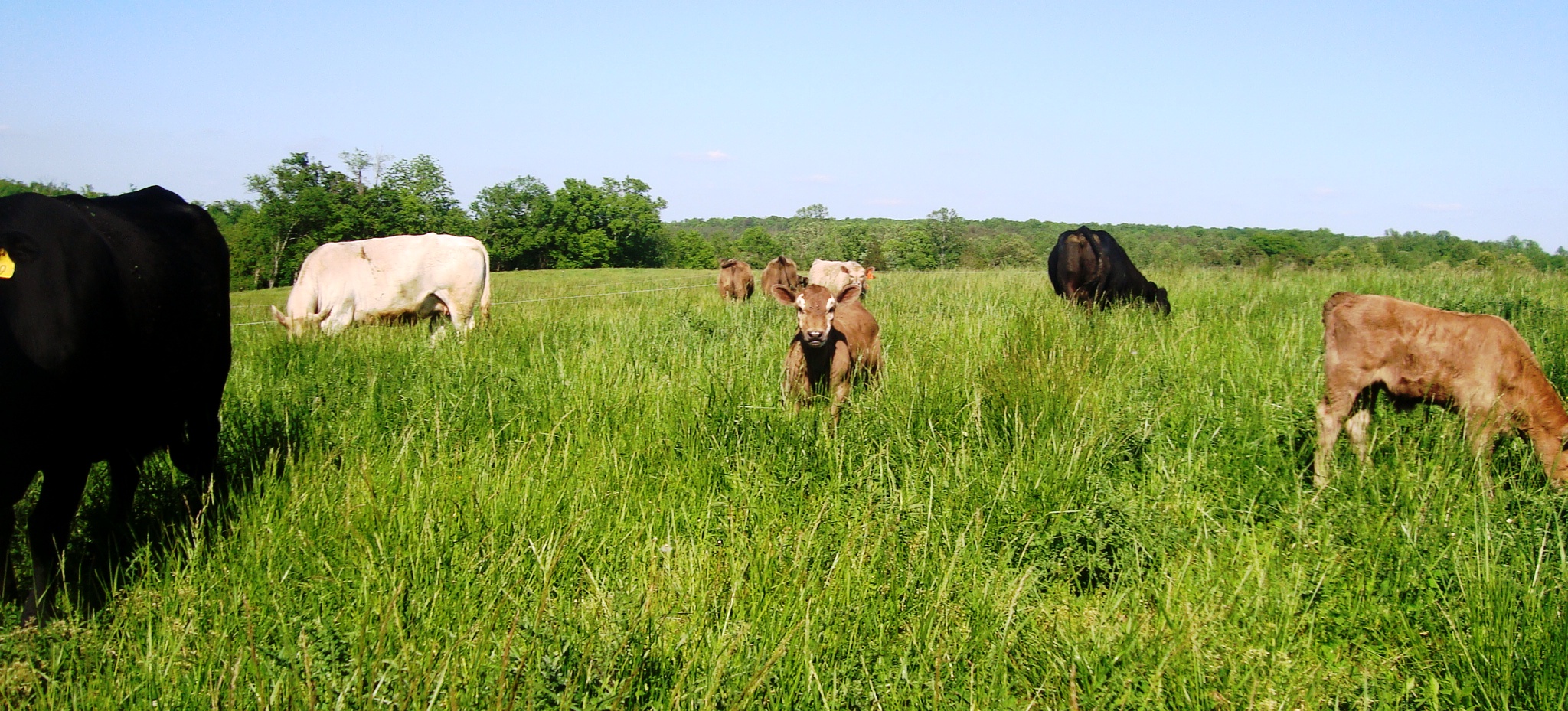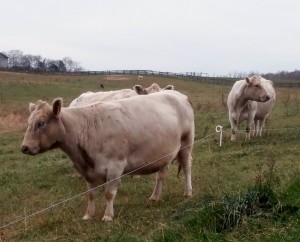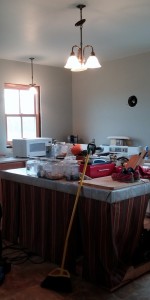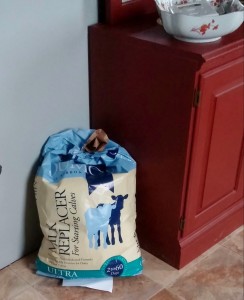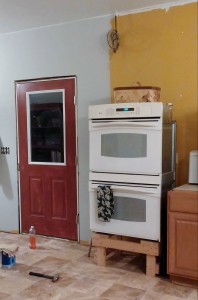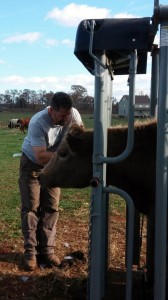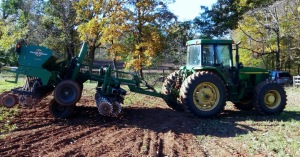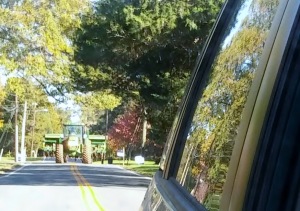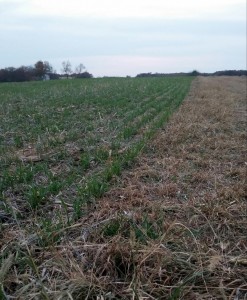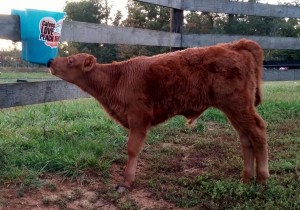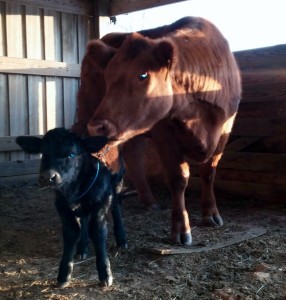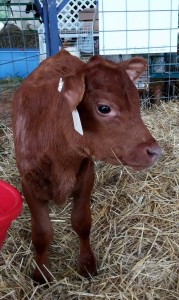We’re fortunate in that not only did we get to select the site for our house, we designed and built it ourselves. (the fact that we ran out of money before we finished is beside the point). When you’re laying out a farm, it may seem that you have all the room you could possibly need to do anything that you want, but a farmstead is more than a house and all the pieces have to function properly together. You don’t want bellowing calves by your house, any more than you want grain trucks going by it. Your kids need a safe place to play, and you need to be able to see as much of their activity as possible. From one of my kitchen windows, I can see the garden, the kids play area, and beyond that to the riding ring. From the window at my kitchen sink, I can look straight down the alley of the barn. From the window of the kitchen door, I can see every vehicle coming down the driveway, the pond, and perhaps most importantly, I can see the heifer’s field.
The heifer’s field is where we put first calf heifers, anything that is calving off schedule, or ones that we think we may need a little extra attention, like the older cows. This design paid for itself even before the house was built. When the house was just a shell, I rescued two calves who were born during an ice storm. Being able to just look out the window at your cows is an invaluable asset.
So today, the day after Thanksgiving, I’m watching one of the show cows who is getting ready to calve. She’s been getting up and down all day, scratching at her sides, and generally looking like a bovine version of Jabba the Hutt.
Dixie is a pro at this – it’s her fourth calf, and we’re not expecting any problems. The weather is cold, but it’s not rainy or windy, and she’s still hanging out with the group. I expect by tomorrow though we’ll have another Murray Grey calf, and hopefully it will be a heifer.
But in the meantime, I’m not having very good luck paying attention to anything I should be doing. Calves are always exciting, show calves even more so. My binoculars are right here, and every time Dixie moves, I have to go to the window and check on her.
Dixie has had three bull calves. Here’s to a November heifer.
